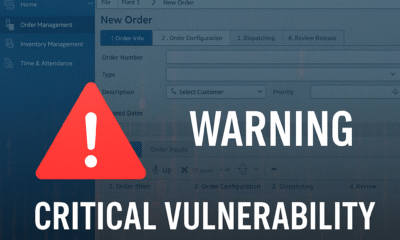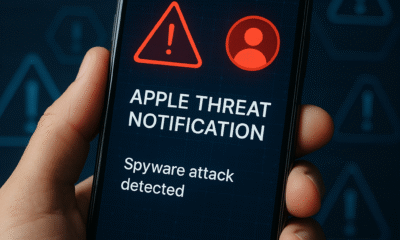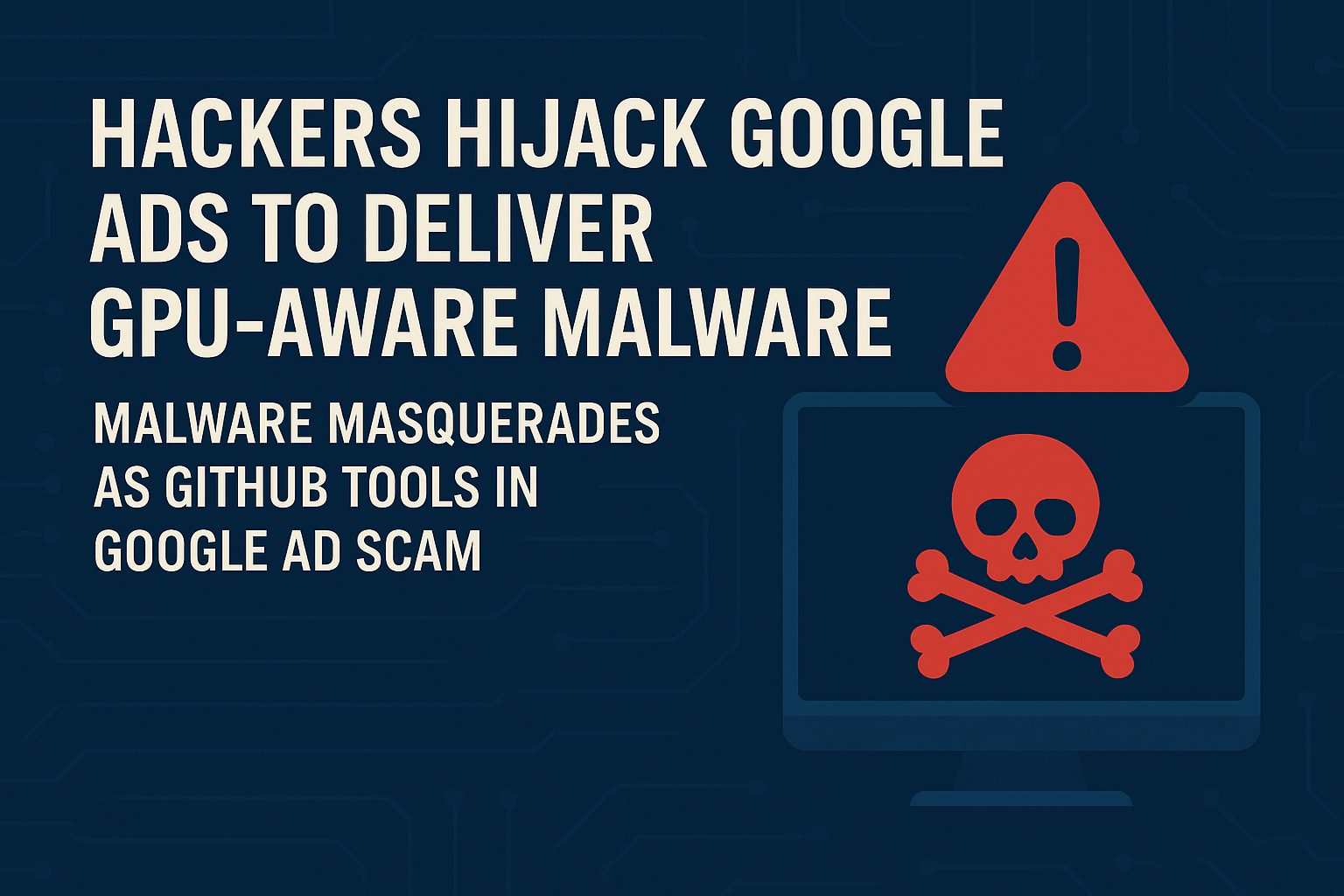International
GPT-5 Is Here – The Dawn of a New AI Era Begins
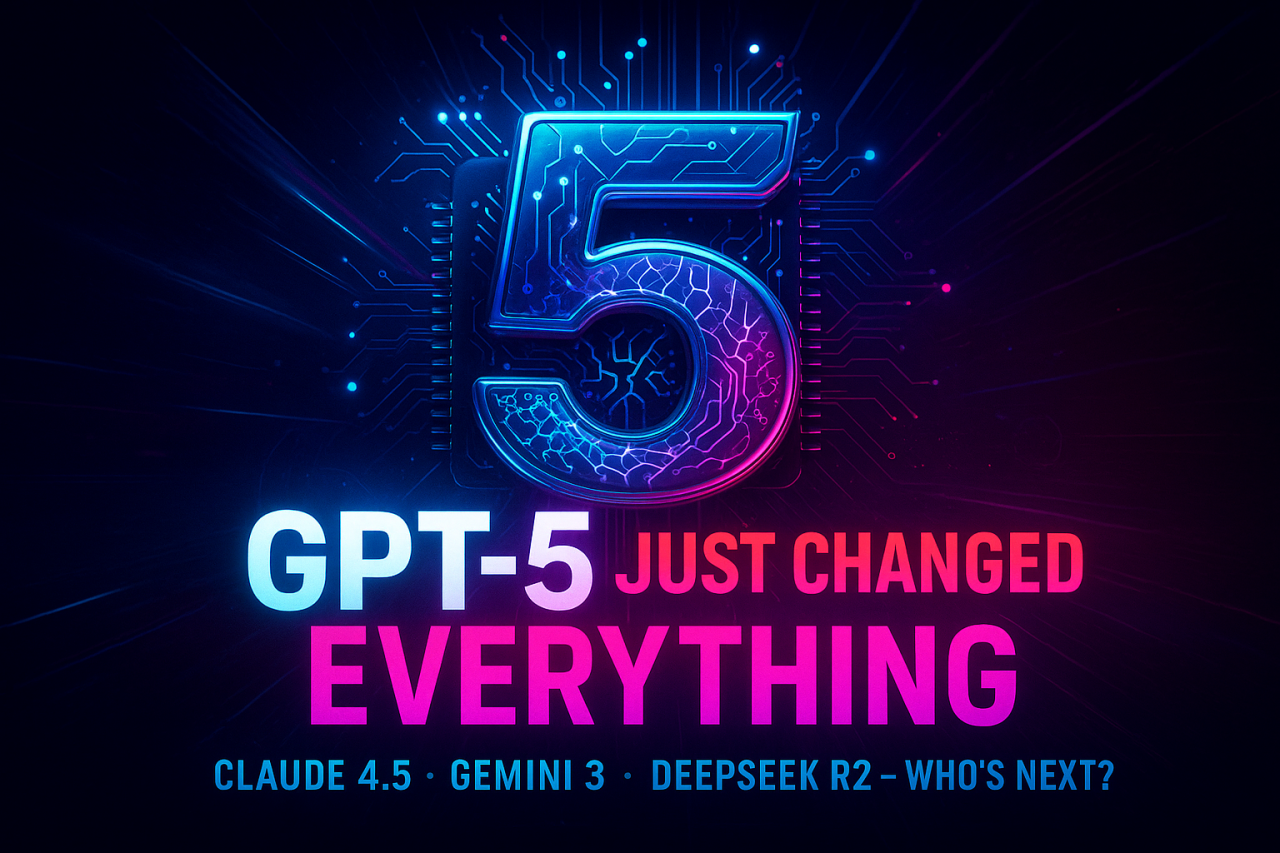
OpenAI’s GPT-5 launch marks a turning point in artificial intelligence, promising unprecedented power and igniting fierce competition in the AI industry.
GPT-5’s Game-Changing Debut
“We are introducing GPT-5, our best AI system yet… a significant leap in intelligence over all our previous models.” — OpenAI
OpenAI officially released GPT-5 yesterday, and the hype is real. Described as a “significant step along the path to AGI” by CEO Sam Altman, GPT-5 is touted as smarter, faster, and more accurate than its predecessors. It’s the first time a GPT model “felt like you can ask a legitimate expert, a PhD-level expert, anything,” according to Altman. In other words, using GPT-5 feels less like chatting with a bot and more like consulting an all-knowing expert on any topic. The model has a massively expanded context window (up to 256,000 tokens) for handling long conversations or documents, and OpenAI claims it hallucinates far less than GPT-4 – a big relief for users worried about AI “making stuff up.”
GPT-5’s new features have stunned observers. It excels at complex coding tasks, even capable of generating entire apps from a simple prompt. Altman quips that “software on demand is going to be one of the defining features of the GPT-5 era”, meaning you can ask GPT-5 to build programs or tools instantly. The model also shines in fields like finance, law, science, and medicine, making it a versatile assistant for professionals. Perhaps most importantly, GPT-5 is rolling out to all 700 million ChatGPT users – both free and paid – ensuring a huge global audience will immediately feel its impact. OpenAI even introduced lighter variants (like GPT-5-mini and GPT-5-nano) so everyone from casual users to enterprises can tap into its power. In Altman’s own lofty analogy, the leap from GPT-4 to GPT-5 is like going from a pixelated screen to a Retina display – a quantum jump in clarity and capability. It’s no surprise many are calling this the dawn of a new era in AI.
Claude 4.5: Anthropic’s Next Move
“Claude Opus 4 is the world’s best coding model.” — Anthropic
With GPT-5 raising the bar, rival Anthropic isn’t sitting still. Anthropic’s latest model, Claude 4 (notably the Claude Opus 4.1 update), recently “dominate[d] coding tests” by scoring 74.5% on a key software engineering benchmark – outperforming both OpenAI’s best GPT-4 model and Google’s Gemini 2.5. In fact, Claude 4.1 took the crown as the top coding assistant, cementing Anthropic’s reputation for AI programming prowess. This stronghold in coding capabilities puts pressure on GPT-5, which is now expected to match or exceed Claude on such tasks. Anthropic appears to be racing to keep its edge – some observers noted Claude 4.1 felt like a “rushed release to get ahead of GPT-5”. That hints Anthropic is determined not to be left behind.
So what’s next? Many speculate an even more advanced “Claude 4.5” (or similar) may be on the horizon as Anthropic’s answer to GPT-5. While details are under wraps, it’s a safe bet that the next Claude iteration will focus on closing any gaps GPT-5 opened. We can expect improvements in general reasoning and possibly a larger context window or enhanced tool use, building on features Claude 4 already introduced (like extended reasoning with web searches and coding assistance). Anthropic has publicly said Claude 4 is “the world’s best coding model”, and they’ll fight hard to maintain that title. If GPT-5 truly starts an AGI-like wave, Claude 4.5 could be Anthropic’s play to stay in the game, offering users an alternative AI assistant that’s just as intelligent – or even smarter in certain domains. It’s a classic AI arms race: GPT-5 raises the stakes, and Claude is gearing up to call.
Google’s Gemini 3: The Search Giant Strikes Back
“Gemini 3 references found in code hint at Google DeepMind’s next AI model.” — TestingCatalog
Not to be outdone, Google’s DeepMind team has been quietly preparing its counterpunch – rumored as Gemini 3.0. Code leaks and insider chatter suggest Google is working on Gemini 3 (with versions like “3.0 Flash” and “3.0 Pro”) as the next generation of their flagship AI. Why does this matter? Because Google’s Gemini 2.5 models are currently among the top AI models (Gemini 2.5 Pro was just slightly behind Claude on coding benchmarks). A jump to Gemini 3 could mark a major upgrade in capability. In fact, hints of a new “Deep Think” feature have been spotted – an advanced reasoning and chain-of-thought capability that Google reportedly has up its sleeve. This suggests Gemini 3 might excel at complex problem-solving and planning, potentially leveraging Google’s strength in multi-modal AI (combining text, images, maybe even video understanding in one model).
Importantly, the timing is telling. The Gemini 3 project was uncovered just as OpenAI’s GPT-5 and other rivals’ launches loomed. Many analysts think Google is positioning Gemini 3 as a direct answer to GPT-5, ensuring they don’t lose the AI crown. After all, Google kicked off the AI race years ago with its transformers and has vast resources – they likely won’t let GPT-5 dominate without a fight. We might see Gemini 3 debut with enhanced reasoning, better coding skills, and deep integration into Google’s ecosystem (imagine AI built into Search, Gmail, Android, etc.). For users, that means more choices: ChatGPT with GPT-5, Anthropic’s Claude, or Google’s Gemini – all competing to be the smartest AI assistant on the planet. This fierce competition could spur each to new heights, as each company tries to one-up the others in features and performance.
DeepSeek R2: The Uncommon Challenger from China
“The launch of DeepSeek’s R2 could be a pivotal moment in the AI industry.” — Reuters
Beyond the Silicon Valley heavyweights, a dark horse is emerging in the AI arena: DeepSeek R2. DeepSeek is a Chinese AI startup that stunned the tech world earlier this year with its R1 model, which reportedly rivaled Western models at a fraction of the cost. How extreme is it? R1 was so disruptive it “triggered a $1 trillion-plus sell-off in global equities” when it debuted, thanks to its cut-rate AI prowess. Now, DeepSeek is racing to launch R2, the successor, and experts say “the launch of DeepSeek’s R2 model could be a pivotal moment in the AI industry”. The reason: R2 is expected to be as powerful as the best models from OpenAI or Google, but dramatically cheaper and more efficient. Rumors suggest an ingenious design – a mixture-of-experts architecture with 1.2 trillion parameters (yes, trillion) where only 78 billion are active at once. In plain terms, R2 could match GPT-5’s skill while using far less computing power. One leak claims it may be ~97% cheaper to run than OpenAI’s top model, which, if true, would undercut the big players and democratize access to ultra-powerful AI.
DeepSeek R2 is also expected to be highly versatile: strong at coding, fluent in multiple languages (not just English), and even capable in vision and audio tasks. Chinese tech companies are already lining up to integrate DeepSeek’s models, and the U.S. government is reportedly worried, seeing R2 as a threat to U.S. AI leadership. However, R2’s release has been mired in drama – reports in June said DeepSeek’s CEO delayed the launch due to unsatisfactory performance, despite plans to release by May. There are also challenges like export restrictions on high-end chips for China, which could limit R2’s rollout. Still, whenever R2 does arrive, it could shock the industry by proving that innovation isn’t monopolized by the usual tech giants. Keep an eye on this one – it’s the uncommon contender that might change the AI game globally.
A New Era Begins – What’s Next?
GPT-5’s debut isn’t just another product launch; it feels like the opening chapter of a new era in AI. Suddenly, the frontier of what AI can do has jumped forward – and rivals are scrambling to catch up or leapfrog ahead. For consumers and businesses, this brewing AI arms race could mean rapid improvements in the tools we use every day. We’re talking smarter chatbots, AI assistants that can handle more complex tasks, and widespread AI integration from search engines to office software. OpenAI envisions GPT-5 ushering in an age of “AI experts at your fingertips,” and indeed, early demos show it coding entire programs and giving medical-style advice on command. Competitors like Anthropic and Google will push their models to do the same or better, while newcomers like DeepSeek promise to make high-end AI more accessible and affordable than ever. The pace of AI advancement is likely to accelerate as each player races not to be outdone.
For the tech industry, this new era could reshape the balance of power. If GPT-5 starts a revolution, we might see AI startups and incumbents alike investing even more heavily in research (the big tech firms are already spending hundreds of billions on AI data centers). We might also see AI models becoming competitive on quality and cost, not just one or the other – a win for users. Of course, it’s also a bit unpredictable: Will having AI this powerful at everyone’s fingertips change how we work or create content? Will it spark new innovations or new dilemmas (like how to ensure these models are used responsibly)? Those questions are just beginning. What’s clear is that GPT-5’s launch has lit a fire under the entire industry. A new chapter in the AI story is unfolding, and whether it’s GPT-5 leading the way or Claude, Gemini, DeepSeek and others catching up, one thing is certain – we are in for an exciting ride. The AI landscape a year from now could look utterly different. Buckle up, because the future that sci-fi promised might finally be arriving, one model at a time.
At a Glance: The New AI Titans (and How They Compare)
- OpenAI GPT-5: Just launched, general-purpose powerhouse. Excels in coding, writing, and complex reasoning with far fewer mistakes than prior models. Huge context window and new “thinking” mode make it feel almost like an AGI in training. Already available to 700M users via ChatGPT.
- Anthropic Claude 4/4.1 (toward “4.5”): Coding specialist and research-focused AI. Currently outperforms GPT-4 in programming tasks, and known for tool use and long-form reasoning. Likely to get even better soon to challenge GPT-5. Anthropic’s answer for those seeking an alternative AI with a safety-first approach.
- Google Gemini (v2.5 → v3.0): Google’s multimodal contender, designed to handle text, images, and more. Gemini 2.5 is strong (used in Google’s Bard and enterprise offerings), and Gemini 3 is anticipated to bring “deep thinking” abilities and tighter integration with Google’s products. Aims to match or beat GPT-5, backed by Google’s vast AI research.
- DeepSeek R2: The upstart from China, rumored to rival top Western models in intelligence while being dramatically cheaper to run. Focuses on reasoning, coding, and multilingual support. If it delivers on promises, it could open a new front in the AI race by breaking Big Tech’s monopoly. Release date is uncertain, but its impact could be global.
Each of these AI systems has its own strengths, but they’re all converging toward a common goal: more human-like intelligence accessible to everyone. The competition among them means the biggest winners may ultimately be us, the users, who will enjoy more powerful AI tools and faster innovation. The era of GPT-5 and its rivals is just beginning, and it promises to be one for the history books.
Sources: OpenAI/WIRED; Reuters; VentureBeat; TestingCatalog; Reuters; Overcast AI Hub.
Related Topics: #BREAKINGNEWS #MAG212 #MAG212NEWS #AI #GPT5 #GPT5PRO #OPENAI #SAMALTMAN #CLAUDE45 #ANTHROPIC #GEMINI3 #GOOGLEDEEPMIND #DEEPSEEKR2 #AIWARS #AGI #CODINGBENCHMARKS #SWEBENCH #REASONINGAI #MULTIMODAL #SAFETY #HALLUCINATIONS #ENTERPRISEAI #APIPRICING #CHATGPT #MICROSOFTAZURE #TECHINDUSTRY #INNOVATION #GLOBAL
business
🇲🇦 King Mohammed VI’s Speech Sparks Heated Debate in Parliament — “جيل زد يُجيب”
Rabat — October 2025
Inside Morocco’s Parliament, tension and reflection filled the air just hours after His Majesty King Mohammed VI delivered his opening-session speech. What was meant as a national roadmap quickly turned into a day of open confrontation, emotional testimonies, and unexpected admissions from members of both majority and opposition blocs.
🏛️ A Speech That Touched Nerves
The King’s address, described by analysts as “direct and reform-oriented,” called for greater social justice, job creation, and balanced development across Morocco’s regions.
“No village left forgotten, no coast without a hand,” the King declared — a message that resonated deeply with citizens and lawmakers alike.
Within hours, parliamentary corridors buzzed with interviews, arguments, and introspection. Some MPs hailed the speech as “a moral reset,” while others questioned whether the government was capable of turning royal vision into tangible results.
🧠 From Rabat to the Sahara — Gen Z Responds
Younger members of Parliament — labeled as جيل زد (Gen Z) — became the focus of cameras and public curiosity. Many expressed frustration at what they see as a widening gap between political promises and everyday realities faced by Moroccan youth.
“The King spoke about unity and work. We agree — but the youth need a chance to prove themselves,” said one 28-year-old deputy.
“We have the energy; the system just needs to open its doors.”
Another young MP caused a social-media storm after saying that “in some ways, Moroccan social values are stronger than Germany’s.”
Critics accused him of downplaying Europe’s economic strength, while others applauded his pride in Moroccan family cohesion.
He later clarified his words, emphasizing that every nation faces challenges — and that Morocco’s real wealth lies in its people.
💬 Resignation, Reflection, and Responsibility
Just a week earlier, one deputy had submitted his resignation in protest over what he called “a lack of listening to the new generation.”
After the King’s address, he withdrew it.
“The royal speech gave me renewed hope. This is not the time to quit — it’s time to work,” he told reporters.
Across party lines, both RNI and PAM youth wings echoed similar messages: commitment to reform, but also impatience with bureaucracy.
Several MPs criticized ministers who, they said, “do not answer calls, do not reply to written questions, and have lost touch with citizens.”
⚖️ Opposition Voices: ‘A Government in Denial’
Members of the opposition used the session to accuse the cabinet of denial and poor communication, arguing that ministers are “living in a different reality” from citizens struggling with prices and unemployment.
“The royal messages were clear,” said one opposition leader. “The problem is not the King’s vision — it’s implementation.”
🌍 Morocco’s Path Forward
Analysts note that the King’s address aligned with long-standing themes: national cohesion, balanced territorial development, and respect for dignity in public service.
But the 2025 context — economic pressure, youth disillusionment, and the digital activism of Gen Z — gives these calls new urgency.
“This generation communicates differently,” said a policy researcher. “If institutions don’t adapt, they’ll lose credibility.”
🕊️ A Message Beyond Politics
As the parliamentary session ended, one young MP summed up the mood:
“الملك تكلّم… ونحن سنُجيب بالعمل — The King spoke, and we will answer through action.”
For now, the chamber that often echoes with partisan debates found itself united — briefly — under a single message:
Morocco’s future belongs to its youth, but responsibility belongs to everyone.
data breaches
Manufacturing Software at Risk from CVE-2025-5086 Exploit

Dassault Systèmes patches severe vulnerability in Apriso manufacturing software that could let attackers bypass authentication and compromise factories worldwide.
A newly disclosed flaw, tracked as CVE-2025-5086, poses a major security risk to manufacturers using Dassault Systèmes’ DELMIA Apriso platform. The bug could allow unauthenticated attackers to seize control of production environments, prompting urgent patching from the vendor and warnings from cybersecurity experts.
A critical vulnerability in DELMIA Apriso, a manufacturing execution system used by global industries, could let hackers bypass authentication and gain full access to sensitive production data, according to a security advisory published this week.
Dassault Systèmes confirmed the flaw, designated CVE-2025-5086, affects multiple versions of Apriso and scored 9.8 on the CVSS scale, placing it in the “critical” category. Researchers said the issue stems from improper authentication handling that allows remote attackers to execute privileged actions without valid credentials.
The company has released security updates and urged immediate deployment, warning that unpatched systems could become prime targets for industrial espionage or sabotage. The flaw is particularly alarming because Apriso integrates with enterprise resource planning (ERP), supply chain, and industrial control systems, giving attackers a potential foothold in critical infrastructure.
- “This is the kind of vulnerability that keeps CISOs awake at night,” said Maria Lopez, industrial cybersecurity analyst at Kaspersky ICS CERT. “If exploited, it could shut down production lines or manipulate output, creating enormous financial and safety risks.”
- “Manufacturing software has historically lagged behind IT security practices, making these flaws highly attractive to threat actors,” noted James Patel, senior researcher at SANS Institute.
- El Mostafa Ouchen, cybersecurity author, told MAG212News: “This case shows why manufacturing execution systems must adopt zero-trust principles. Attackers know that compromising production software can ripple across supply chains and economies.”
- “We are actively working with customers and partners to ensure systems are secured,” Dassault Systèmes said in a statement. “Patches and mitigations have been released, and we strongly recommend immediate updates.”
Technical Analysis
The flaw resides in Apriso’s authentication module. Improper input validation in login requests allows attackers to bypass session verification, enabling arbitrary code execution with administrative privileges. Successful exploitation could:
- Access or modify production databases.
- Inject malicious instructions into factory automation workflows.
- Escalate attacks into connected ERP and PLM systems.
Mitigations include applying vendor patches, segmenting Apriso servers from external networks, enforcing MFA on supporting infrastructure, and monitoring for abnormal authentication attempts.
Impact & Response
Organizations in automotive, aerospace, and logistics sectors are particularly exposed. Exploited at scale, the vulnerability could cause production delays, supply chain disruptions, and theft of intellectual property. Security teams are advised to scan their environments, apply updates, and coordinate incident response planning.
Background
This disclosure follows a string of high-severity flaws in industrial and operational technology (OT) software, including vulnerabilities in Siemens’ TIA Portal and Rockwell Automation controllers. Experts warn that adversaries—ranging from ransomware gangs to state-sponsored groups—are increasingly focusing on OT targets due to their high-value disruption potential.
Conclusion
The CVE-2025-5086 flaw underscores the urgency for manufacturers to prioritize cybersecurity in factory software. As digital transformation accelerates, securing industrial platforms like Apriso will be critical to ensuring business continuity and protecting global supply chains.
data breaches
Spyware Surge: Apple Sends Fourth Security Alert to French Users
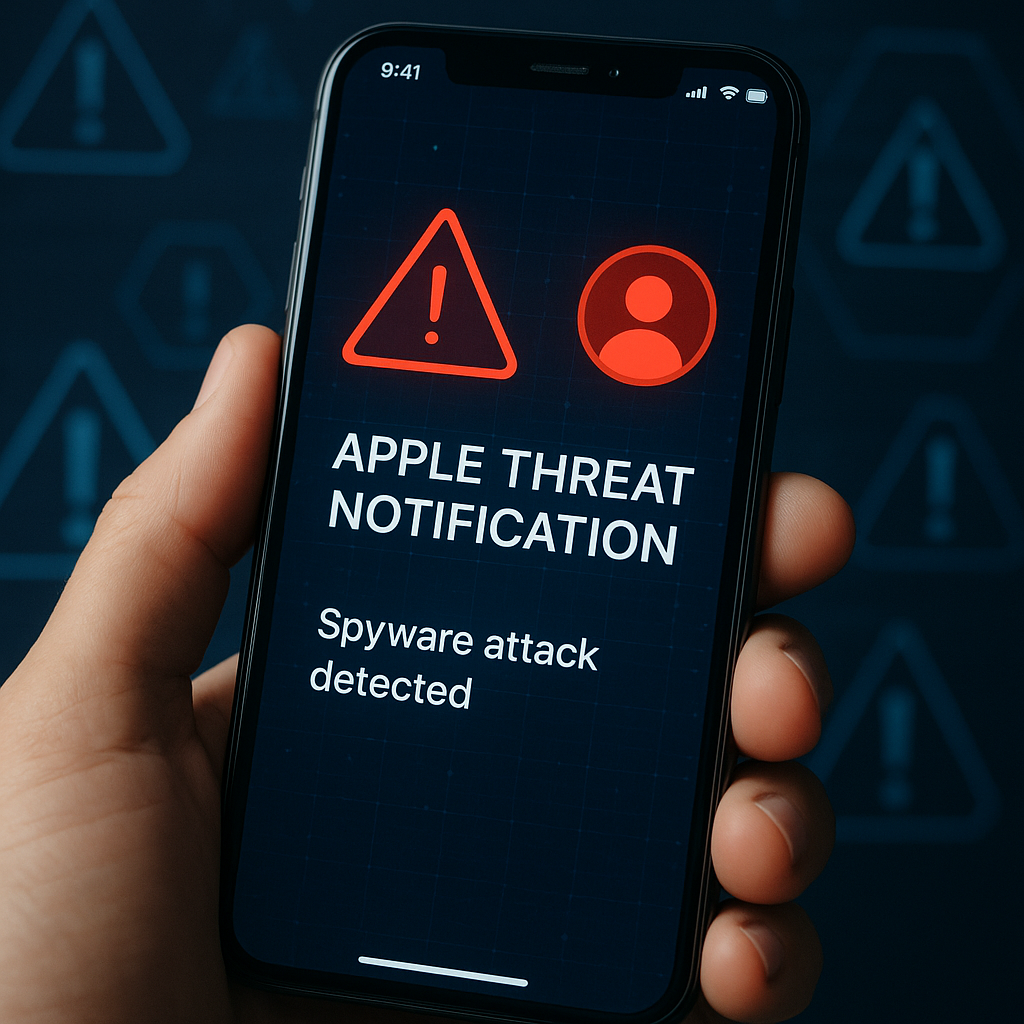
CERT-FR and Apple warn of sophisticated spyware targeting iCloud-linked devices via zero-click exploits; high-profile individuals at risk.
Apple and France’s CERT-FR have issued a fourth spyware notification in 2025, alerting users to potential compromise of iCloud-linked devices through highly sophisticated zero-click attacks. Targets include journalists, activists, politicians, and officials. Authorities urge urgent updates, lockdown measures, and enhanced defenses amid rising mercenary spyware risks.
PARIS — Apple has issued its fourth notification of the year to French users, warning that at least one device linked to their iCloud account could have been compromised in a sophisticated spyware campaign, authorities confirmed Friday.
- On September 3, 2025, Apple alerted users in France via iMessage, email, and iCloud notifications that their devices may have been targeted by spyware. The Hacker News+1
- This marks the fourth such advisory this year, with prior alerts issued on March 5, April 29, and June 25. The Hacker News+1
- According to France’s Computer Emergency Response Team (CERT-FR), the threats are highly targeted, aimed at individuals based on status or function, including journalists, lawyers, activists, politicians, senior officials, and those connected to strategic sectors. The Hacker News+1
- CERT-FR clarified: “Receiving a notification means that at least one of the devices linked to the iCloud account has been targeted and is potentially compromised.” Dark Reading
- The alerts often arrive several months after compromise attempts, and the time lag is variable. Dark Reading
- Known spyware implicated in similar campaigns includes Pegasus, Predator, Graphite, and Triangulation—tools described by CERT-FR as “particularly sophisticated and difficult to detect.” Dark Reading+1
Historical or Geopolitical Context:
- CERT-FR has been issuing these notifications since November 2021 but has intensified alerts in 2025 with four documented campaigns in France alone. The Hacker News+1
- Globally, mercenary spyware campaigns against civil society figures and officials have drawn scrutiny for their use of zero-click and zero-day vulnerabilities. TechRadar+1
- CERT-FR (France’s national cybersecurity agency): “Receiving a notification means that at least one of the devices linked to the iCloud account has been targeted and is potentially compromised.” Dark Reading
- Security researcher interviewed by Dark Reading (paraphrased): “Spyware programs like Pegasus, Predator, Graphite, and Triangulation are particularly sophisticated and difficult to detect.” Dark Reading
- El Mostafa Ouchen, international cybersecurity adviser and author, added: “This pattern of repeated, stealthy attacks underscores the importance of proactive device defenses. When high-profile individuals are targeted, detection must coincide with rapid response protocols—regular updates, lockdown modes, and separation of sensitive from general-use environments aren’t optional; they’re essential.”
Technical Analysis
How the Incident Occurred & Possible Attack Vectors:
- The attacks largely exploit zero-click vulnerabilities, which allow spyware to be delivered and activated on a device without any interaction from the user. Dark Reading
- Zero-day flaws—previously unknown and unpatched security vulnerabilities—are used as entry points, including flaws in the ImageIO framework (e.g., CVE-2025-43300) and WebKit. Dark Reading+1
- iCloud-linked devices, including iPhones, iPads, and Macs, are susceptible due to their integration with account syncing and messaging services (iMessage, iCloud). TechRadar+1
Affected Systems:
- Devices tied to impacted Apple IDs—even those not actively in use—may be exposed if they remain connected via iCloud.
- Alerts are triggered when Apple identifies indicators of compromise tied to known spyware chains.
Mitigations and Remediations:
- Users are urged to update their devices immediately, enabling automatic updates to ensure timely patching of zero-day vulnerabilities. Dark Reading
- CERT-FR recommends enabling Lockdown Mode, a feature that restricts many device functionalities to mitigate spyware risk. Dark Reading
- Regular device restarts also aid detection and disrupt latent malware activity. Dark Reading
Impact & Respons
Who Is Affected:
- Individuals in France (and possibly elsewhere) whose devices are linked to compromised Apple IDs, spanning prominent roles in journalism, politics, law, and activism. The Hacker News+1
Actions Taken:
- Apple is dispatching notifications and sending alerts via email, iMessage, and iCloud logins.
- CERT-FR has issued official advisories and security guidance.
- Apple patched at least seven zero-day vulnerabilities this year, including those in ImageIO and WebKit. TechRadar
Possible Long-Term Implications:
- Continued exploitation of zero-click spyware may accelerate regulatory pressure on mercenary spyware firms and drive policy changes.
- Public trust in mobile device security may erode unless transparency and mitigation improve.
- Surveillance of high-profile individuals raises concerns about privacy, democratic integrity, and misuse of advanced spyware.
- France is among several countries where Apple has stepped up threat notifications tied to sophisticated spyware campaigns.
- The use of mercenary spyware—commercially sold surveillance tools used by governments, including NSO Group’s Pegasus—has been a global concern over the past several years.
- Zero-click attacks have been notably difficult to detect, and have been implicated in espionage of journalists, dissidents, and government officials in multiple regions.
The revelation that Apple users in France are now facing a fourth spyware alert in 2025 signals an escalation in stealthy, targeted cyber intrusions. As attackers rely on elusive zero-click and zero-day exploits, rapid technological and policy responses are essential. Continued vigilance, device hygiene, and legislative action may be needed to shield democracy’s key voices from such pervasive threats.

